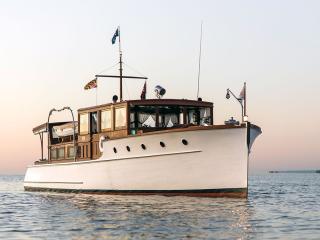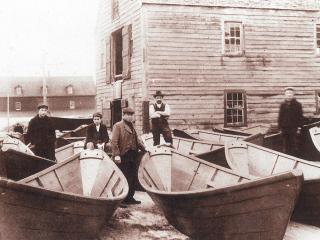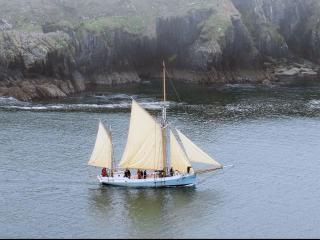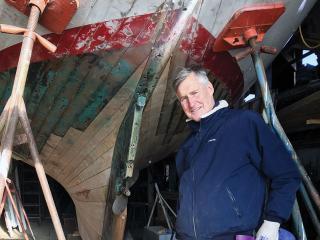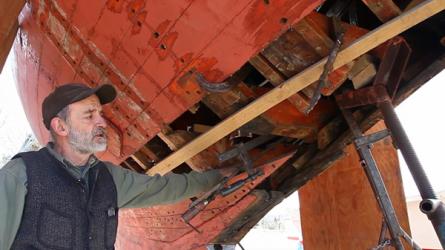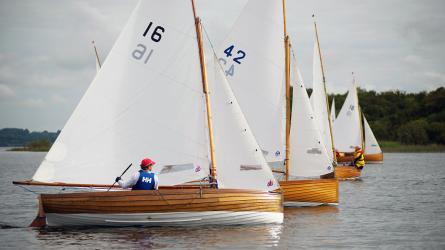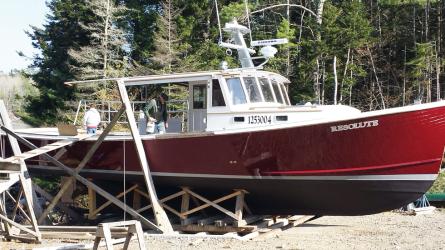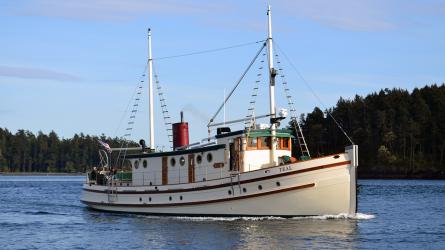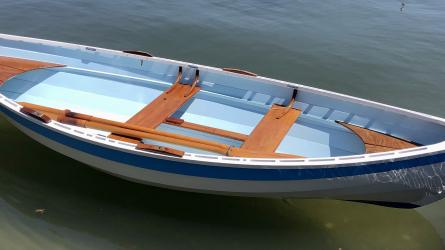March / April 2020
An Eye for Details
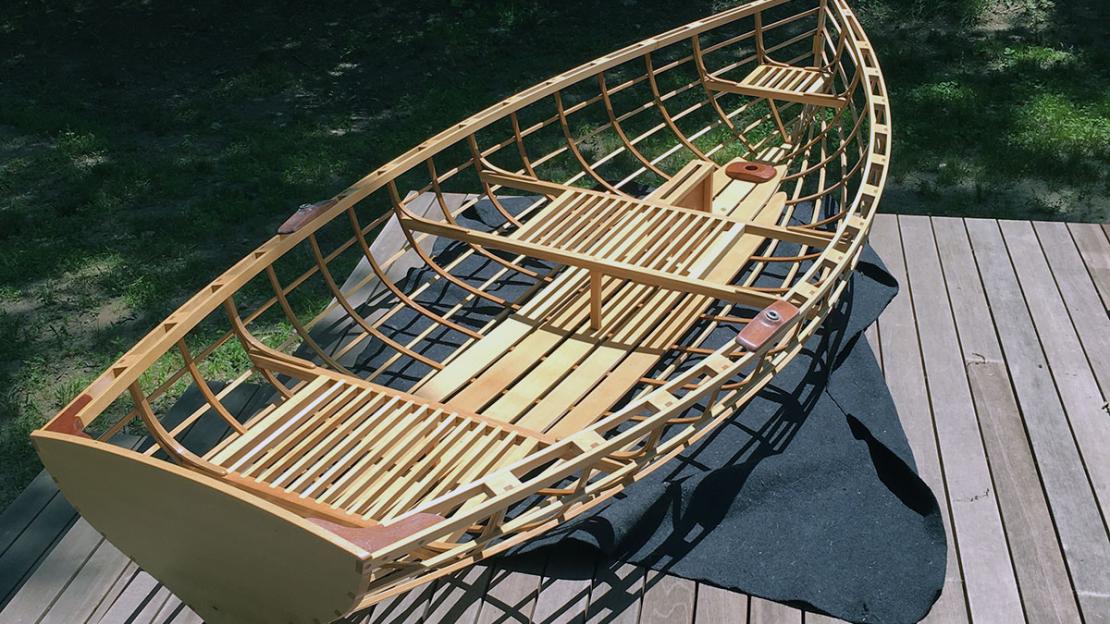
For a Platt Monfort–designed Classic 10 skin-on-frame dinghy, the author put his personal stamp on the construction details, but he did not alter the shape of the hull.
Trust your eyes,” a boat designer once told me as I was building a wood-strip canoe to his plans. Your eyes, he said, will tell you what looks right and what doesn’t, and you should trust your instincts. At first, I found that suggestion maddening because I didn’t have the confidence that comes with experience. But as I continued to work on the canoe I found that it was perhaps the best piece of advice I had ever been given. It recently came to mind again when I decided to build another boat, this time a new dinghy for my 34' sailboat.
I needed a dinghy because my inflatable, at 10 years old, had outlived its expected lifespan. I was tired of its cranky outboard motor, which wouldn’t always start. I had had enough of the leaky rubber pontoons and paying the hefty price of a dinghy slip every summer. I was dreaming of a pretty little rowboat, preferably one that I could hoist onto my truck rack and launch whenever I needed it. Looking around at available designs, the ones by Platt Monfort of Geodesic Airolite Boats caught my eye—especially the “Classic 10.” It’s a great-looking boat, highly regarded by its owners, extremely light at only 40 lbs, and would fit—just barely—on the foredeck of my sailboat. As I researched the design further online, I saw that people who had built them had enjoyed the process and also enjoyed the boat. So I decided to go ahead and build one.
I work as a machinist, and my entire career has been in mechanical design, machine-shop work, and project management. I’ve built a lot of different things, sometimes to other people’s plans and sometimes to my own. “Trust your eyes” became invaluable advice for me in numerous ways, and I realized early on that it was going to play a big part in this project. I really liked the overall shape of the boat, but I was surprised to find that a lot of the building details were quite basic, obviously drawn with the novice builder in mind. Although they were generally in line with the angular, high-tech look of the boat, I felt that I could do some things differently and give that boat a little more aesthetic refinement and soften its hard edges a bit. I wanted to make it my own.
To read the rest of this article:
Click the button below to log into your Digital Issue Access account.
No digital access? Subscribe or upgrade to a WoodenBoat Digital Subscription and finish reading this article as well as every article we have published for the past 50-years.
ACCESS TO EXPERIENCE
2-for-1 Print & Digital Subscription Offer
For this holiday season, WoodenBoat is offering our best buy one, get one deal ever. Subscribe with a print & digital subscription for $42.95, and we’ll give you a FREE GIFT SUBSCRIPTION to share with someone special.
1 YEAR SUBSCRIPTION (6 ISSUES)
PLUS ACCESS TO MORE THAN 300 DIGITAL BACK ISSUES
PRINT+DIGITAL $42.95
Subscribe
To read articles from previous issues, you can purchase the issue at The WoodenBoat Store link below.
 Purchase this issue from
Purchase this issue from
